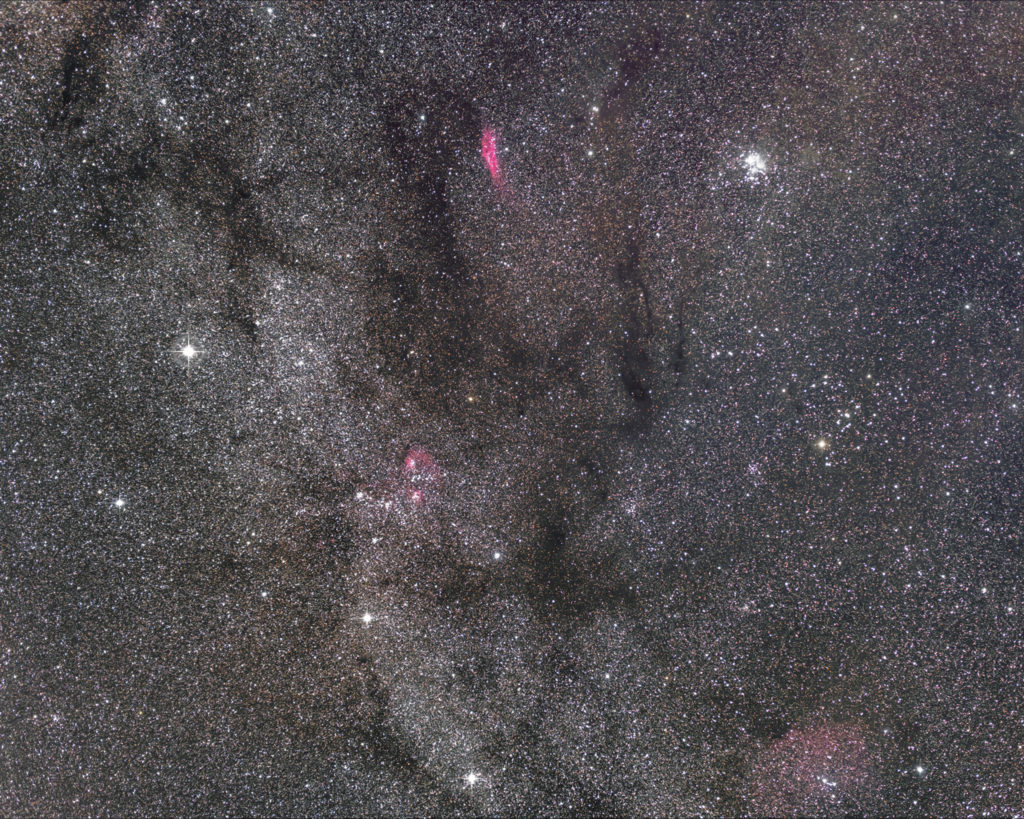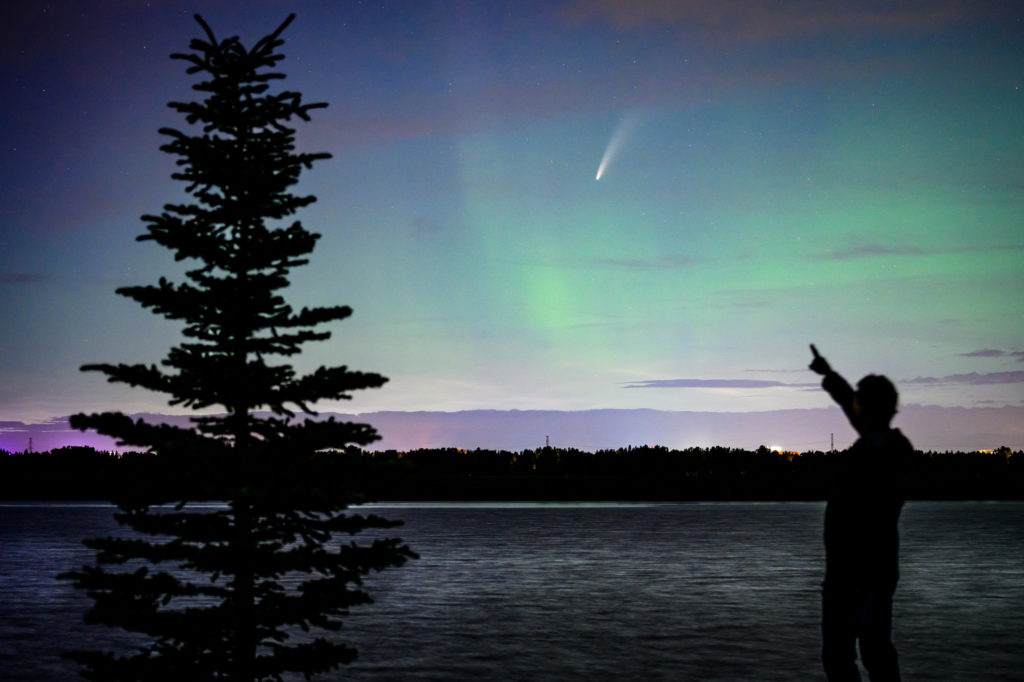Around the Moon in 28 Days
The Taurus Molecular Cloud

Not far from the Pleiades and Hyades star clusters along the northern Milky Way lies the coal-black fingers of the Taurus Molecular Cloud, the nearest star-forming region to Earth. Unlike the more famous Orion star factory, with the dazzling Orion Nebula and associated bright blue-white stars, the TMC is not well known to most stargazers. That’s because it doesn’t offer much to see, with no bright nebulae and just a dark and sooty network of tendrils that span more than 30o of sky. But the TMC is the nearest star-forming region to Earth, making it of considerable interest to astronomers. It’s also a rewarding target for astrophotographers who can capture its structure against the starry background in the constellations Taurus and Auriga [Read more…] about The Taurus Molecular Cloud
Share This:Five Favorite Images from 2020

To call me an astrophotographer would be an overstatement. But that doesn’t stop me from bringing a camera along when stargazing on a clear night to complement some casual visual observations. No image can reproduce what it’s like to look through a telescope or binoculars, especially in dark sky when the eye beholds the scintillation of stars and silver-white nebulae and galaxies against the black matte of the background universe. But images have the advantage of permanence, to some degree at least, and of leaving a record of what we’ve seen and where we’ve been in the night sky over the months and years [Read more…] about Five Favorite Images from 2020
Share This: